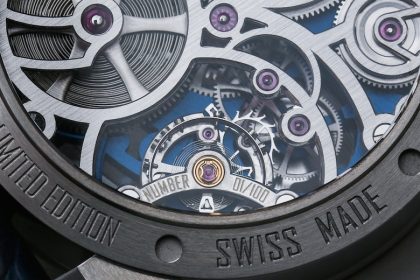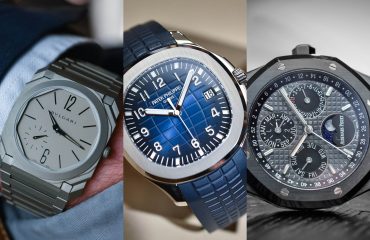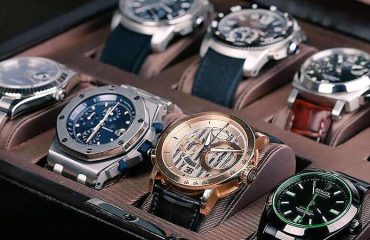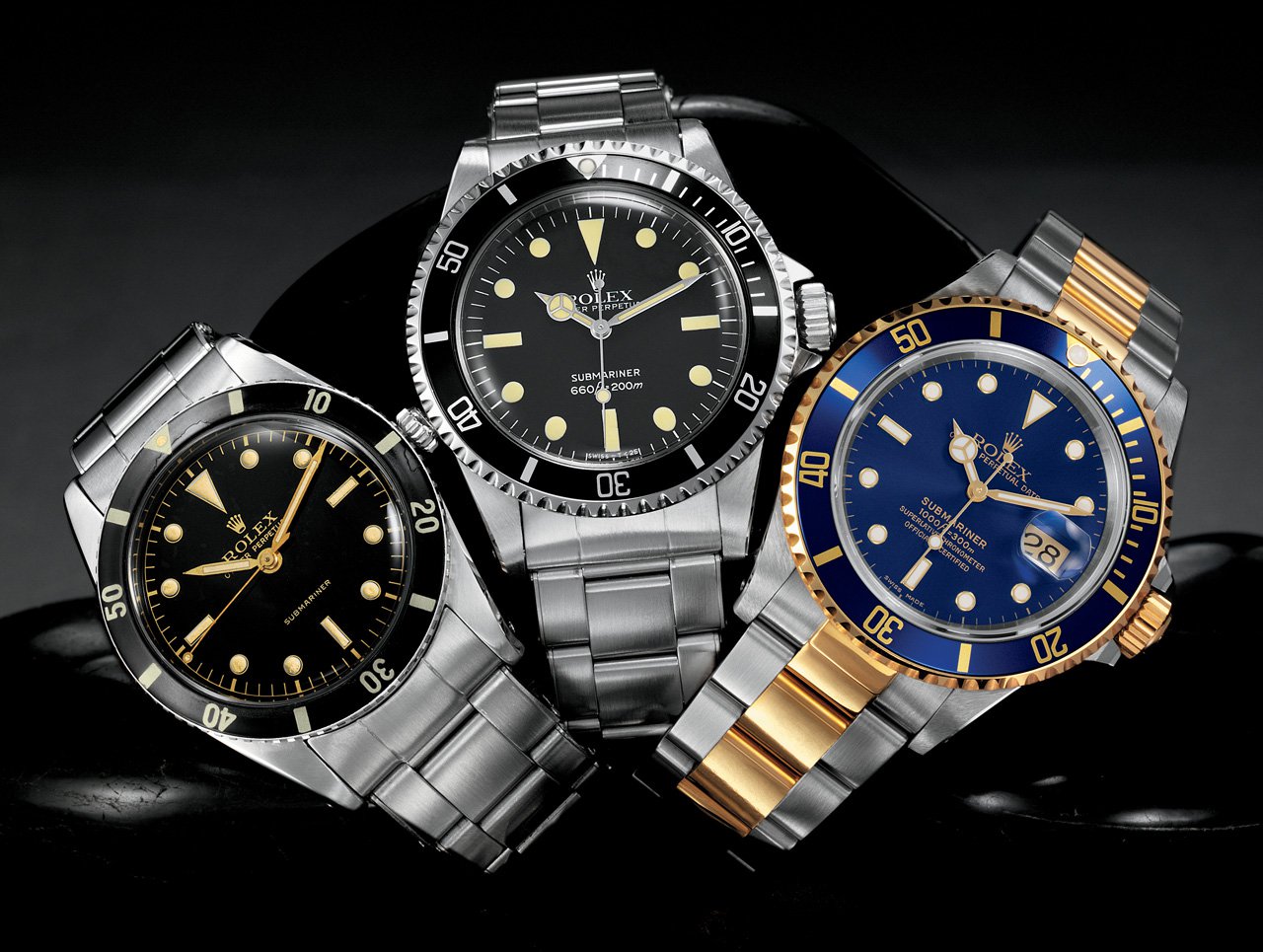
ST.-IMIER, Switzerland — In some respects, very little has changed at Cadrans Flückiger S.A., a dial maker founded here, in the French-speaking part of the Jura Mountains, in 1860.
The River Suze still trickles through the surrounding St.-Imier Valley, the smallest and least known of Switzerland’s three major watchmaking centers, behind Geneva and the legendary Vallée de Joux. The factory still uses original equipment, including an antiquated rose engine, to perform age-old techniques such as guillochage, a process that creates precise decorative patterns. And the workers still labor by hand to produce dials for a coterie of Switzerland’s leading watch brands, including Patek Philippe, Audemars Piguet and Chopard.
Since being acquired by Patek Philippe in 2006, Cadrans Flückiger has grown from 54 employees to around 100. But it remains a throwback to the 19th century, when a system of production known as établissage — a French term referring to the assembly of a watch from components made by outside specialists — flourished throughout the watchmaking villages of the Jura.
Today, Swiss watches — particularly the handcrafted mechanical variety, lauded for their precision and pedigree — are synonymous with luxury. A Swiss airlines advertisement at Zurich Airport says it all: “Like shopping for a Swiss watch. Hard to make a mistake.”
“The Swiss have that image of producing quality at the highest level, as Germans have the image of producing the best cars in the world,” said Georges Kern, chief executive of the Swiss watchmaker IWC Schaffhausen. “And you cannot just copy this.”
Yet when the Flückiger dial factory opened, the Swiss were merely contenders jockeying for a leading position among Europe’s horologists. The tale of how they came to dominate the high-end watch trade offers a lens on to the industrial age, and the competing interests that have shaped the luxury business.
Around the same time, Huguenots fleeing persecution in France brought their artistic savoir-faire to bear on the local watch trade in Geneva, gradually transforming the city into a cradle of high watchmaking.
But it would be nearly 300 years before the Swiss would challenge the supremacy of their European neighbors. The Germans and Dutch led the way in horological advances in the 17th century with inventions such as the fusee chain and balance spring, respectively. And no one disputes the 18th-century reign of the English, whose technical innovation — by men such as James Cox, George Graham and John Harrison — laid the groundwork for today’s mechanical movements.
By the time the Swiss-born master watchmaker Abraham-Louis Breguet — inventor of, among other things, the tourbillon, a rotating device to counteract the effects of gravity on a pocket watch; the pare-chute, a shock-absorbing mechanism; and the flat balance-spring with one or two terminal coils, known as the Breguet overcoil — arrived in Paris as a 15-year-old apprentice in 1762, the watch world was on the brink of another power shift.
The French watchmaker Jean-Antoine Lépine’s 1770 invention of a simplified flat caliber with bridges, known as the Lépine caliber, made it possible to produce a thinner pocket watch — and augured the end of England’s watchmaking ascendancy. “At that time, men’s fashion — thin trousers, waistcoats — demanded a nonbulky watch case,” said the horological historian David Christianson, author of “Timepieces: Masterpieces of Chronometry.” “And the Brits weren’t willing to thin their watches.”
More important, Frédérick Japy, a watchmaker on the French side of the Jura Mountains, adapted the Lépine caliber to factory production in 1800, setting the stage for a new era of mass production. The development favored watchmakers in Switzerland, where peasants and farmers occupied their winter months by making watch components for firms based in Geneva. Their industriousness and autonomy helped their country outproduce rival centers.
“As a country, Switzerland is very decentralized,” said Jérôme Lambert, chief executive of Montblanc. “Every valley has an owner or organization that has a dynamic, small city center. That created a very natural extension of the traditional watchmaking way. It was not the same case in England, Germany or France, where it was very much centralized in big cities.”
Using the établissage system, the Swiss turned out far more timepieces than their European counterparts, who had yet to grow beyond a cottage industry. According to Mr. Christianson, England and Switzerland each produced 200,000 timepieces in 1800; by 1850, the Swiss were churning out 2,200,000 watches while the Brits saw virtually no increase. Quantity, however, did not imply quality.

“The Swiss were able to produce ‘fake watches’ that looked like English or French watches but were of lower quality,” he said.
As national production ramped up, a few key makers with a reputation for making fine timepieces emerged. Longines, founded in St.-Imier in 1832 — when it was known as Agassiz & Co., after its founder, Auguste Agassiz — was among the first to buck the établissage trend. In 1866, the company brought all of its watchmaking activities under one roof, and within 45 years, employed 1,100 workers who shipped its timepieces around the world.
Concurrently, the budding American watch trade began to coalesce around the needs of the railroad industry, which demanded accurate timekeepers. While American watchmakers did not have a history of practicing rarefied arts, like their Huguenot counterparts in Geneva, they excelled at producing reliable timekeeping devices quickly and efficiently.
The industrialized American system was so alluring to the Swiss that, in 1868, an American by the name of Florentine A. Jones moved from Boston to Schaffhausen in eastern Switzerland, and founded the International Watch Company, today known as IWC Schaffhausen, in an effort to combine Swiss craftsmanship with America’s optimized production process.
The increasing dominance of American-made pocket watches threatened the Swiss, who tried to get the upper hand in the years between 1860 and 1880 by flooding the American market with cheap watches. “But they were junk,” Mr. Christianson said.
At the turn of the 20th century, the Swiss refined their strategy. “They started to produce a good quality watch at a mid-range price,” Mr. Christianson said. “That went on through World War I.”
Swiss firms such as Longines, Patek Philippe and Vacheron Constantin began aggressively to court American consumers. They succeeded in cornering the market after World War II, which decimated the American watchmaking industry, whose factories had been commandeered by the war effort and couldn’t adjust to the demands of civilian production.
The Swiss did not luxuriate in their top-dog status for long, however. By the onset of the 1970s, the Japanese had developed cheaper and more accurate quartz technology that allowed them to dominate the trade in inexpensive timepieces. Switzerland’s mechanical watch industry lost 60,000 workers throughout the decade, as one factory after another succumbed to the crisis.
It took the vision of Nicolas G. Hayek, Sr., a Swiss-Lebanese entrepreneur, to jump-start the mechanical watchmaking renaissance in the 1980s with his introduction of Swatch, a Swiss-made quartz watch that beat the Japanese at their own game. Over the ensuing decades, the Swiss restyled themselves as masters of luxury, fashion and, in the most extreme realms, art.
In the past decade, many Swiss watchmakers, from luxury kingpins such as Vacheron Constantin to mid-market brands such as Frederique Constant, have embraced the notion of becoming manufacturers, a term of prestige that distinguishes companies that make every bit of their watches from those that buy components for assembly and marketing.
“This idea of a manufacture movement is a modern invention that came up in the mechanical renaissance because everyone was using the same movement,” said Elizabeth Doerr, editor in chief of Quill & Pad, a website about the watch industry. She referred to the base movements manufactured by ETA, a division of the Swatch Group. “These high-end brands had to figure out a way to differentiate themselves.”
Today, the Swiss watchmaking landscape is divided between companies that carry on the modern equivalent of établissage, sourcing parts and movements from outside suppliers — chief among them ETA — and those making a go of being manufactures. The latter includes a rising contingent of non-Swiss brands — based in Germany, America, Denmark, even China — that are beginning to challenge the watch industry conventional wisdom: that only Switzerland is capable of producing fine timepieces.
According to many observers, however, they have a long way to go before they dethrone the Swiss. “I don’t see any other contenders,” said Daryn Schnipper, head of Sotheby’s international watch division. “In order to make a watch you need a crazy amount of capital to set up a factory. It’s not something you can make at home.”
Maximilian Büsser, founder of the boutique Swiss brand MB&F, agreed with that assessment — with one caveat. “It’s not about ‘will the Swiss continue to dominate?’ ” he said. “The existing players will continue to dominate, not because they’re Swiss but because they’re so big. The barrier to entry in this business is enormous.”
Mr. Büsser rattled off a list of recent luxury group acquisitions to demonstrate the consolidation that is rampant in the watch business, making it difficult for independent makers to succeed: In 2011, French-owned Kering acquired a majority stake in the parent company to the 220-year-old prestige Swiss brand Girard-Perregaux; in July, it purchased the 168-year-old maker Ulysse Nardin, known for its high-quality marine chronometers. In 2013, Corum was sold to Haldian Holdings, marking the first time an haute horlogerie brand fell under Chinese ownership.
“It’s not about being German, French, Chinese or Swiss,” Mr. Büsser said. “Any watch brand that starts today — good luck.”
Bibliography:
www.nytimes.com/2014/11/21/style/international/what-enabled-switzerland-to-dominate-watchmaking.html





You must be logged in to post a comment.